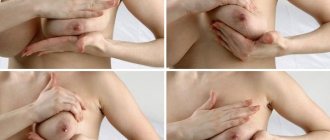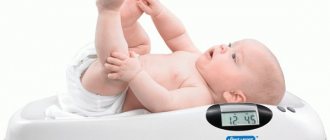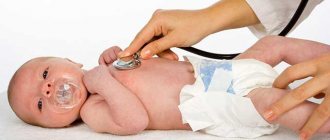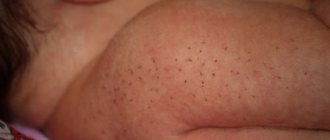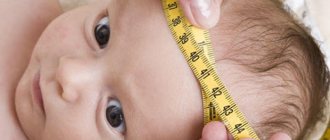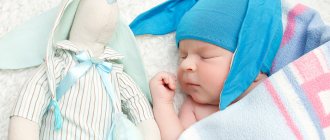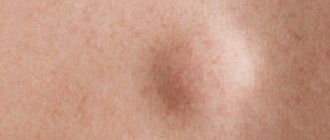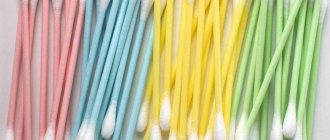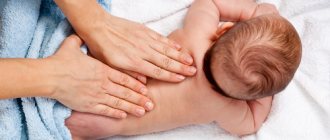Soft and delicate, children's hair is so different from adult hair. On the one hand, their structure is no different from the structure of adult hair (these are not baby teeth), however, there are quite a lot of differences in the pace of development and characteristics of care. How does baby hair grow?
Children's hair, like adults' hair, grows in three stages, called the active growth, slow growth and dormant phase.
On average, in adults this cycle lasts from two to five years, in children – several years longer. The growth rate of curls and their density are influenced by heredity, the presence of external irritants, features of blood circulation and the secretion of internal glands. If there are no infectious diseases in the body, during the first few years hair grows at a rate of 1-1.5 cm per month. Long hair does not grow any slower; it’s just that compared to the overall length, the growth seems minimal. And after reaching a certain time, the growth rate slows down, since long hair moves from the active growth phase to the slow phase. This is followed by a resting phase, after which the hair falls out and is replaced by the next one, which has been maturing in the hair follicle throughout this time.
Children's and adult hair grows in three phases. For the former, each phase lasts a little longer, since the hair follicles are still forming. They begin to work as quickly as possible only in adolescence.
What determines the growth of hair on a child's head? How fast do they grow?
The root cause of poor development is heredity . If most relatives have thin, dry hair, your child will most likely have the same.
Also, it is worth noting that hair is formed in the womb , which means that it is mothers who should take care of the appearance of their children - eat well, get all the necessary vitamins.
On average, children's hair grows 1 cm per month .
Features in children under 1 year
Reference . The final internal strength of hair is formed only by the age of 10.
The hairstyle of newborn children differs in its structure from the hair of adults - it is weaker, the follicles are located shallowly , and the color can be completely opposite to the color of the parents' hair.
Until about 24 months, they constantly change in color and structure .
After birth, the baby undergoes a number of hormonal, physical and emotional changes, and hairstyle may change.
Don’t worry about thinning hair, this is normal for up to six months..
After six months, baldness may indicate a lack of vitamins; you should contact your pediatrician, he will prescribe vitamins (calcium, zinc, iron, microelements) if it is really necessary.
IMPORTANT ! In no case should you use folk recipes for growing braids on newborns - the skin is too delicate, you can do harm - cause irritation, an allergic reaction, or burn the already weak hair follicles.
The child’s diet, or the mother’s diet when breastfeeding, should contain a large number of useful elements ( sour-dairy products, fruits, vegetables, fish ).
Due to a lack of calcium, bones, teeth, hair, and nails will not develop normally— after 8 months, if teeth and hair are absent, a doctor’s consultation is necessary .
Reference . For good absorption of calcium, phosphorus and vitamin D are necessary; with its deficiency, brittle bones and rickets develop, this is fraught with consequences in the form of improper physical development.
The growth of hair is also affected by the emotional state of the child - hair will not grow well if the child is nervous and constantly cries.
Do not forget about seborrheic dermatitis - a scaly yellow crust in the fontanel area - it also does not allow curls to develop well.
After the first year of life
After the first year, in the absence of diseases or hormonal imbalances, the emphasis should be on proper nutrition , all macro- and microelements, auxiliary substances for good metabolism must be present.
It is believed that short hair and receding hairline before the age of 5 are the norm , and you should start getting upset after this period.
To reassure you, you can undergo an examination by an endocrinologist, trichologist, or neurologist.
How do children's curls grow?
In both adults and children, the life cycle of curls is the same. But the “baby” hairs grow a little slower, and their structure is significantly different. Firstly, they are distributed slightly unevenly over the head - there may be small bald patches that heal over time. Secondly, children's hair, long or short, looks more like fluff because the shaft is very soft. Every year the hair shaft becomes tougher and more resistant to external irritants. Thirdly, children's hair follicles do not work as quickly as adults. Each hair takes more time to mature, and some of the follicles are completely in a semi-dormant state. Full activation of hair follicles occurs between the ages of 10 and 15 years. Around this time, the structure of the curls becomes the same as in adults.
The situation with the scalp in children is the same as with the hair. In babies, it is very tender; it reacts to any irritant with a rash or peeling. We'll tell you how to deal with this further.
How to grow hair at home?
How to speed up hair growth in a child? Proper care should stimulate the growth of curls:
- washing head;
- massage;
- a haircut.
ATTENTION ! Experts advise girls under 5 years old not to grow their braids (boys usually wear short hair) - long hair requires care - it gets tangled all the time. Tight braids and ponytails tightly tied with elastic bands negatively affect growth - they break, blood flow to the scalp is disrupted.
Children should not comb their hair with metal brushes; it is better to use wooden combs.
On our website you can find a huge number of recipes for homemade masks for hair growth: with nicotinic acid, from coffee grounds, with vodka, cognac or beer, with mustard and honey, with aloe, with gelatin, with ginger, with henna, with bread, with kefir, with cinnamon, with sea buckthorn or burdock oil, with mustard and sugar, with salt, egg and onion.
Washing head
Shampoo should be chosen with a neutral acidity level and does not contain sodium sulfate . Typically, children's shampoos always meet the requirements, but it is better to be safe and check the composition.
You can rinse the hair of babies and older children with chamomile decoctions - it soothes and prevents inflammation.
The water temperature should be about 40 - 50 degrees - hot water does not promote development.
You shouldn't rub your hair with a towel to dry it quickly - the structure begins to deteriorate.
It is not recommended to use a hairdryer - hot air has a detrimental effect on the quality of the hairstyle.
For thickness after 2 years, you can use the yolk with burdock or peach oil - rub into the scalp.
Read more about using various oils to accelerate hair growth: burdock, castor, jojoba, olive, sea buckthorn, almond, lavender.
Massage
Gently stroke the baby's head with your fingers - this will awaken the hair follicles and activate growth. about 10 minutes to perform the movements . You can use natural essential oil.
A haircut
The widespread opinion about cutting your head a year has no basis . This haircut is suitable for severe bald spots - for a more aesthetic appearance.
It is recommended to trim the ends (2 - 3 cm) once every 2 months; updating stimulates growth.
Causes of slow hair growth in children
Before talking about possible anomalies, it is necessary to clarify three factors that influence normal scalp growth:
- Hair on the head or body of a child and an adult is a typical, simple atavism left to us from distant ancestors, according to Darwinian teaching;
- Hair is a thread-like appendage of the skin, exactly the same as nails, because both consist of 95% keratinoids - the main cells of the epidermis;
- Another 2% is allocated to other microelements with vitamins, and 3% to moisture;
- The hair on the head is the most “nutritious” organ - the hair follicles receive the necessary substances from 225 thousand sebaceous glands, and there are 250 thousand such glands in the body;
- The sebaceous substance, which nourishes each hair follicle in which the hair root is located, delivers to the root all the nutrients that the body is rich in and necessary for hair growth;
With such attention from the nutritional system, it is not surprising that hair is the fastest growing organ in the human body.
- In addition, hair concentrates the entire mass of chemical and organic elements that the body has.
Therefore, a hair mineralogram analysis (the study of micro- and macroelements in the body) will give a more accurate result than the usual urine and blood tests.
Blood serum contains data on 8-10 elements, while a tuft of hair contains from 30 to 50!
Such a complex and rich organ of a child, like hair, must have a long development cycle - this is the first reason for slow hair growth.
- The first hairs appear in a child in utero, in the 3rd month of pregnancy and cover the entire fetus entirely, like skin, leaving only the palms and soles of the feet “bare”;
- This skin is called “lanugo” and its density depends on the genetic characteristics of the baby’s mother and father. The “shaggier” the parents, the denser and longer the lanugo of the fetus will be;
- This structure of hair density will remain in the child for the rest of his life, even after, by the end of the 6th month of gestation, the skin “peeles off”, dissolving in the amniotic amniotic fluid;
- The child will retain fairly thinned lanugo on his shoulders, forehead, ears and on the outer sides of his arms and legs. The most persistent hair remains on the head of the formed fetus.
Read the article on the topic: Hair on the ears of newborns>>>.
- The same picture with hair can be observed in babies born prematurely;
- Babies who have patiently waited for their birth lose remnants of lanugo as they pass through the birth canal, and the so-called “birth hair” remains on the head for natural reasons;
- True, by 4-8 weeks after birth, the baby’s hair may fall off - this is a physiological norm, you should not be afraid;
- Those children who received the “hairiness” gene will have their hair quickly restored. For those who have not received this gene, hair will grow slowly, and you will have to wait up to a year for thick growth, or even longer.
Genetic predisposition is the second natural factor in thick hair or lack thereof.
- A human child is the most defenseless and imperfect creature among all other animal children.
- After birth, only a human child is so “clinically” unstable to the slightest external influences, so susceptible to diseases and needs especially careful care.
For gentle baby care, see the course Happy Motherhood: Gentle Care Methods>>>
- The reason for this is imperfect hormonal levels, which are regulated by the endocrine glands. Imperfect glands mean imperfect background;
But the work of the baby’s heart, the cleanliness of his skin, the strength of his bones and, of course, the growth and condition of his hair largely depend on the well-coordinated work of the endocrine system.
- The first stage of “improving” the endosystem is completed by the age of 2. At this age, it is already possible to predict what color and thickness the child’s hair will be;
- The second stage will last up to 5 years. But even here, hair can disappear and grow, changing thickness and shade;
- Stage three – awakening of the sexual sphere and the release of sex hormones into the blood – puberty. Only after this period has passed, the final formation of hair follicles in the scalp ends;
- Those hairs that have established themselves after adolescence can be considered “real”;
- While the endocrine glands are completing their formation, the child’s hair can grow either slowly or quickly, or become thick, or thin right before his eyes.
Imperfection of the endocrine system is the third factor in slow-growing hair.
Products for children's hair growth. How to choose the right ones?
How to improve hair growth in a child? Before applying any products, you should consult a doctor - trichologist .
For children, only natural ingredients are used. A, B2, B3, D, E ) are excellent There are also complex products ( Revalid, Perfekil ).
It is better to buy products from licensed pharmacies.
How to strengthen children's hair? You can buy special masks to strengthen your hair, pay attention to the composition (it is better to have some kind of oil and thickener - the fewer components, the better).
For growth and thickness use onion peels, burdock, aloe.
Did you know that some procedures can speed up the growth of strands, such as mesotherapy and scalp massage. It is also very important to comb properly.
Prevention of hair loss in newborns
The main preventive measures that prevent hair loss in newborns and infants include:
- proper nutrition of mother and baby;
- timely diagnosis of background diseases and various pathological conditions in the baby, observation of the child in the first year of life by a pediatrician and specialists;
- use of certified children's products based on natural scalp and hair care products;
- light head massage, timely removal of seborrheic crusts (gneiss).
Olga Sazonova, pediatrician, especially for the Mirmam.pro
How many cm per month can your height increase?
Hair growth, as well as its condition, is always individual, progress can be seen after all the recommendations in a couple of months, growth can increase up to 3 cm per month .
To get luxurious curls in a child, you should try even at conception - eat right, and not stay in environmentally polluted regions.
Next, you should carefully monitor the baby’s development; if there are any deviations, you should consult a doctor.
You need to take care of your hair correctly.
So, we discussed the question: how to grow long hair for children, and you can read tips on growing it for boys here.
Problems you may encounter
Another problem that parents often face is the child’s baldness. It can be partial or complete.
Partial baldness most often occurs on the back of the head. There may be several reasons:
- unchanging position of the child in the crib;
- increased excitability of the child in the first months of life, associated with damage to the nervous system;
- one of the first manifestations of rickets at the age of 3-4 months.
If partial baldness in different places of the head can be caused by fungal infections or the presence of a pustular rash, then complete baldness can be caused by both hormonal problems and other reasons.
What can be recommended in the situations described? In order for the baby's head to change its position in relation to the window, it is recommended to periodically turn the baby 180 degrees in the crib (switching the head and legs). In other cases, appropriate treatment will be prescribed by a specialist.
Moreover, baldness in infants is associated with a terrible disease - rickets. And even if doctors say that everything is fine, anxiety forces them to knock on the doors of other specialists in search of truth and reassurance.
How can young parents know that such a feature occurs in 90% of cases?
Are parents’ concerns about the appearance of a receding hairline in their child justified?
A baby's hair appears long before birth: from about 15 to 20 weeks of pregnancy. But this is more likely a gentle fluff than hair in our understanding.
Lanugo (as it is called) covers the entire body, and by the time of birth it is most often replaced by an intermediate version of the hairline, which remains only on the head.
And if lanugo is completely devoid of pigment, the intermediate hairs, which also feel very soft and airy to the touch, are pigmented depending on genetic predisposition.
In the womb, the child already has “initial” hair.
- Oh, your hair is rich, Vaska!
However, this hair is still five times thinner and more delicate than the adult, terminal one. Accordingly, it requires special delicate care using special products and tools. If this is not provided for, you may encounter problems such as hair loss.
Improper care of the baby's head can lead to injury to the delicate hair follicles and intense hair loss.
To avoid this, it is necessary to select washing products designed specifically for infants, and use them no more than once a week. At other times, simply wash your hair, even if the skin is visible through it, with ordinary water.
If there is gneiss (yellowish coating in the form of crusts), its mechanical removal from the skin is strictly not recommended. The baby is given a kind of oil mask, as a result of which the gneiss softens and is easily removed by bathing and gentle massaging (you can use a special brush).
Another reason why a child’s hair falls out may lie in a fungal infection of the scalp. Such diseases include alopecia and ringworm. In the first case, the curls fall out quickly, sometimes within a few hours, but no peeling or redness is noted.
My head itches... Not good!
In the second case, the hair in the affected area breaks gradually, the area itches, turns red, and flakes off. Fortunately, babies are little susceptible to fungal forms of hair loss. But neurology is found everywhere in newborns.
We suggest you familiarize yourself with: Loreal professional hair care products
With lability of the nervous system in combination with increased sweating, the back of the baby’s head becomes bald.
If your little one is registered with a neurologist and has a problem with hair loss, then the temperature in his room should not exceed 20 C.
One of the clinical signs of rickets is a receding hairline in a child. I repeat: one of, but not the only one. Making a diagnosis based solely on this symptom is absurd.
Indeed, with this disease, children (and parents) are worried about a whole complex of symptoms, consisting of excessive sweating, anxiety, marbling of the skin, sleep disturbances, and stool retention.
Often the disease is accompanied by delayed physical development and flattening of the occipital bones of the skull. Still, accurate diagnosis is only possible with the assistance of laboratory tests.
To prevent rickets (which, according to the famous pediatrician Komarovsky, is extremely rare) and for its treatment, vitamin D is prescribed. Usually its aqueous form is used - Aquadetrim drops. A breastfed baby without signs of rickets does not need additional vitamin D.
We have found that there are various reasons why infants may experience hair loss. However, if the baby wipes the back of his head, this is not a sign of any defect or disease. Most often it’s a matter of ordinary physiology:
- under the influence of adaptation mechanisms, hormonal changes occur in the baby’s body, as a result of which he loses some of his most delicate hairs;
Don't let your baby lie in his favorite position for too long, as this can lead to a receding hairline.
- The structure of a child’s scalp and hair is such that they can easily be damaged under the influence of some factors. For example, a bald patch on the back of a baby’s head is formed from constant lying down without changing position. To minimize this problem, it is recommended to turn the baby over once every 15-20 minutes, if possible. It is important to practice this method to avoid deformation of the baby’s skull bones.
“When Kostya was about 2 months old, a bald patch began to form on the back of his head. I read that this could be a sign of rickets, I got scared and began to drag him to the doctors, who, as they agreed, proclaimed that everything was fine with him. I couldn’t believe it, because my friend’s child didn’t have this…”
“My baby is very restless, constantly turns her head, and has picked out a bald spot on the back of her head. The pediatrician said that everything was fine, there were no signs of rickets, and there was no need to worry. The neurologist says it will heal on its own when she starts sitting.”
“I am indignant: the neurologist says that we have an early stage of rickets, justifying this by the fact that the child is hypotonic and has a bald patch on the back of his head.
This is my second child, the previous one had the same thing, and so did everyone I knew. And no rickets.
I know only two whose children were not bald at that age: one of them walked practically without hair until he was 2 years old, the other was born with thick, very thick hair.”
So, we found out that a month-old baby losing hair is an absolutely normal phenomenon that occurs in most cases. However, if it is accompanied by other signs (anxiety, sweating, refusal to eat, constipation, redness, etc.), then the baby should be immediately shown to a doctor.
2014-05-12
Useful materials
Read our other articles on the topic of growing hair:
- Tips on how to grow curls after a bob or other short haircut, return natural color after dyeing, accelerate growth after chemotherapy.
- Lunar calendar for haircuts and how often should you cut your hair while growing it?
- The main reasons why hair strands grow poorly, what hormones are responsible for their growth and what foods affect good growth?
- How to quickly grow hair in a year or even a month?
- Products that can help you grow: effective serums for hair growth, in particular the Andrea brand; Estelle and Aleran products; hellebore water and various lotions; Horsepower brand shampoo and oil; as well as other growth shampoos, in particular Golden Silk activator shampoo.
- For opponents of traditional remedies, we can offer folk remedies: mumiyo, various herbs, tips on using mustard and apple cider vinegar, as well as recipes on how to make homemade shampoo.
- Vitamins are very important for healthy hair: read the review of the best pharmacy complexes, in particular the drugs Aevit and Pentovit. Learn about the benefits of using B vitamins, in particular B12.
- Find out about various growth enhancement drugs in ampoules and tablets.
- Did you know that spray products have a beneficial effect on hair growth? We offer you an overview of effective sprays, as well as instructions for preparing them at home.
